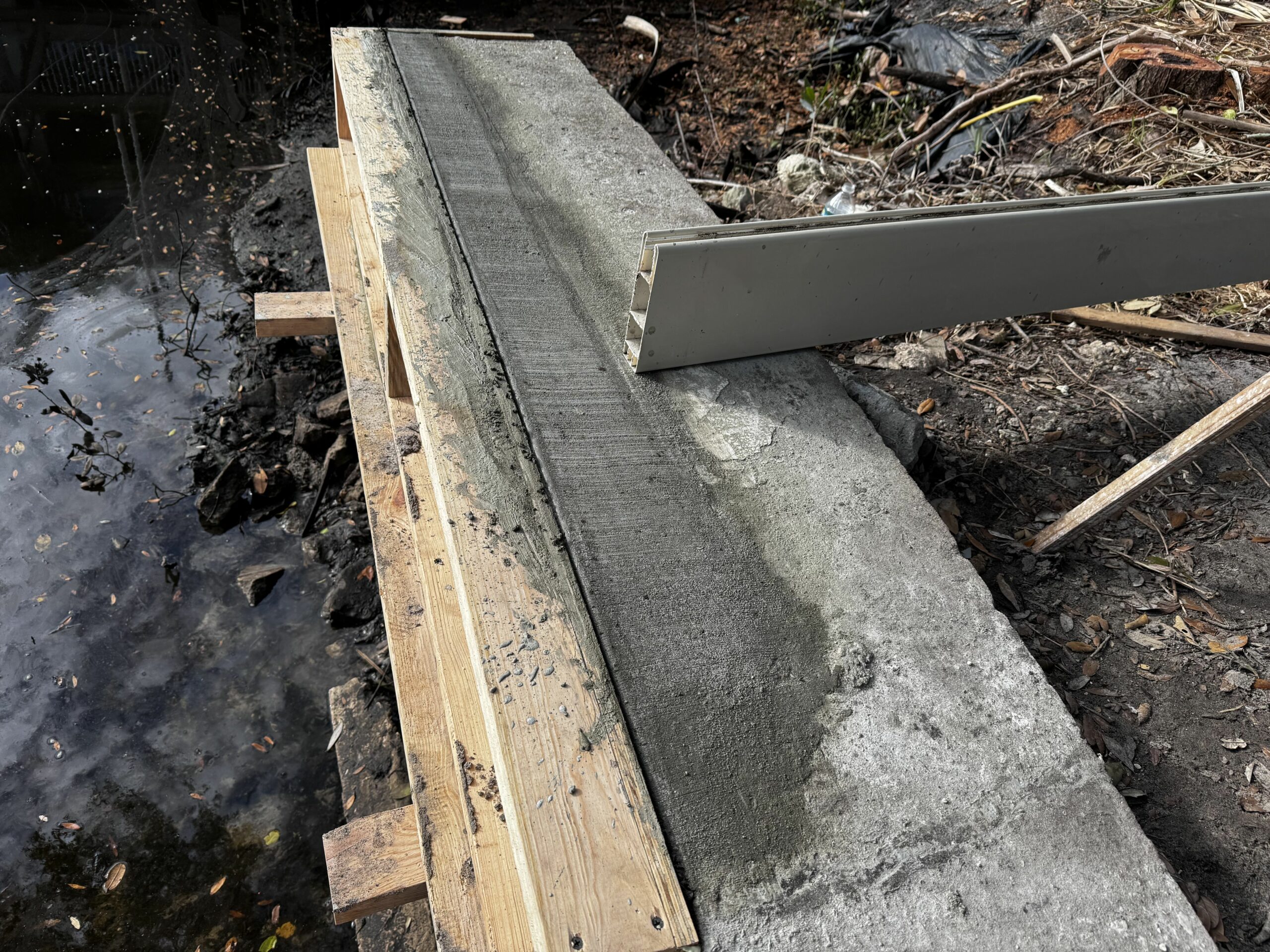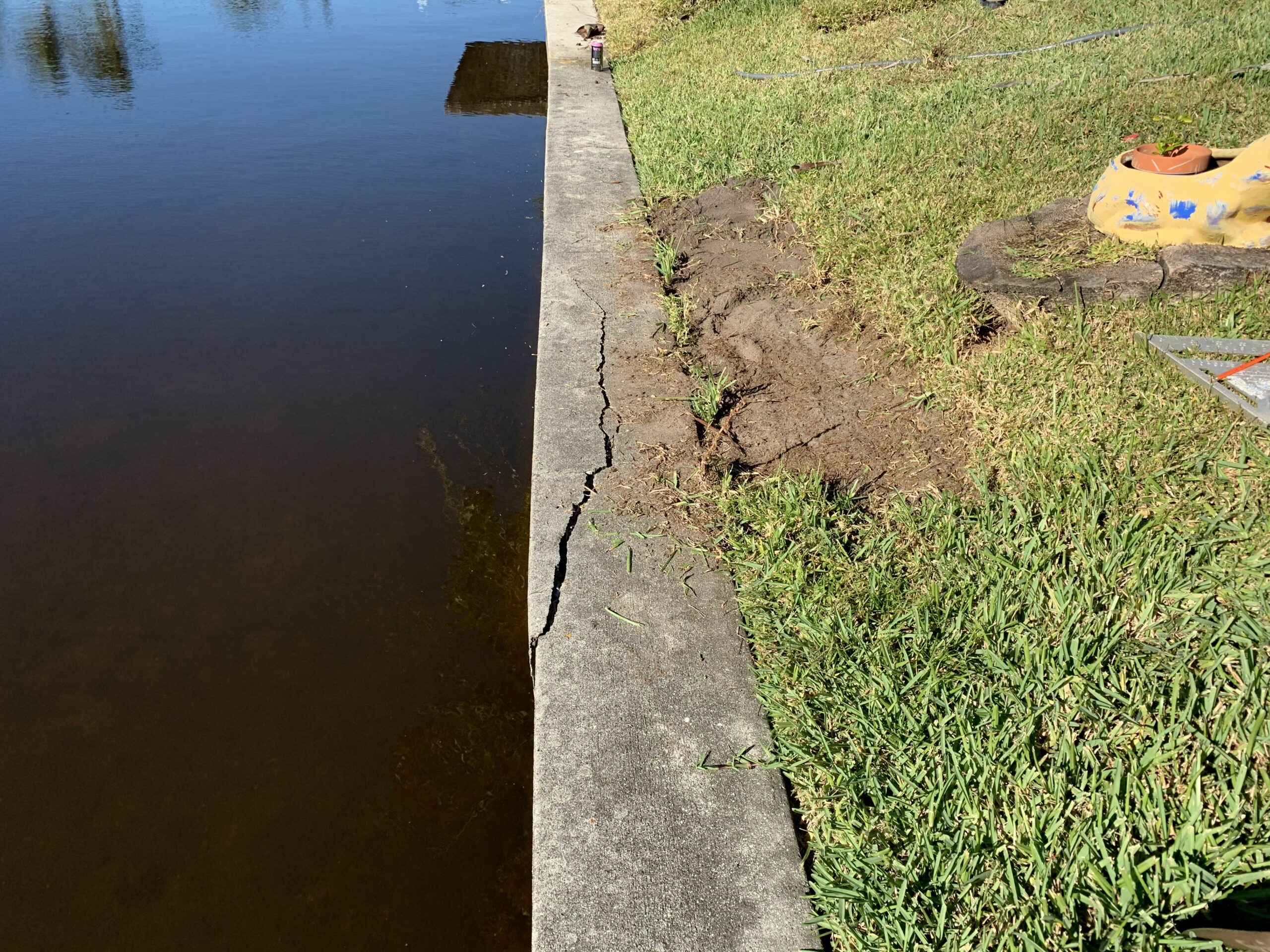Concrete seawall caps are very popular throughout the Southwest Florida region. The Concrete caps encapsulate the seawall panels and provide an exceptionally strong structural beam to support the coastal seawall. The seawall and its deadman system are a combined structural support component to keep your seawall in proper alignment. If a portion of your seawall cap becomes compromised the entire seawall may succumb and fall into the canal, bay or river.
Cap failure in seawalls is generally caused by corrosion of the reinforcing steel in the cap or the tieback rods. Seawall Cap failures in seawalls are intensified by movement of the seawall structure causing additional cracking of the cap. When cracking occurs in the seawall cap, the concrete cap becomes fatigued and cannot reinforce the concrete seawall cap and slabs together any longer.
Seawall Caps are the most crucial part of your waterfront property. It is the primary type of protection to preserve your cherished waterfront property from Mother Nature’s inclement weather and wave conditions. Our tropical environment is subject to hurricane force winds and crashing waves which continually impact our protective seawalls. In order to safeguard your waterfront property values, it is imperative your seawall cap is secure and well maintained.
Hairline cracks or fissures in your seawall cap are typical in most cases and are merely shrinkage fractures. If you notice a loss of soil, cracking, sinking or rotation of your seawall cap, it is imperative that you have your seawall inspected. Seawall Savers specializes in repairing or replacing all types of walls, such as, concrete, steel sheet pile, vinyl and wood walls.
Prolonged exposure to high salinity saltwater causes the seawall cap or panel reinforcing steel to corrode and expand, which causes cracks to develop. As the reinforcing steel continues to expand and erode (spalling), portions of the cap shall commence to break off and fall into the canal, thus weakening the existing seawall structure, leading to potential total failure.
Rust stains by themselves aren’t detrimental, but their presence may be indicative of other issues your seawall is experiencing. At the very least, rust indicates a strong likelihood that regular seawall maintenance has been neglected. Rust in the cracks of the seawall surface mean that saltwater corrosion and intrusion has begun to occur and reinforcing steel is losing its structural integrity. Consider that the presence of surface rust is just a symptom of an assortment of possible structural problems.
The seawall cap and the tie-back anchor system is an integral component of a coastal seawall/bulkhead. Tie-back systems keep concrete seawalls secured in place. Consequently, like most other things that are exposed to corrosive saltwater over long periods of time, tie-backs rods can corrode, eventually disintegrating. In this continual process, they can actually dissolve to a pencil point configuration. When additional stress is impaired upon the seawall structure, the tie-back finally fails and the wall is compromised.




Concrete Seawall Cap replacement is the last course of repair action as it is quite involved and costly. Seawall cap replacement involves multiple sources of equipment and labor resources. We shall provide a itemize list of repair sequences for your review.
Once the commitment has been made to replenish or renovate portions of a concrete seawall cap the following procedures occur.
This procedure is the same whether we are replacing 10 foot of seawall cap or eighty foot. This repair technique is inherently more complex and requires additional light duty equipment to access your rear yard. This repair process has a slightly negative impact on mature landscaping.
In the highly possible event backyard access is hindered or exceptionally confined, the work shall be required to take place off one of our modern modular barges.
Questions about your seawall repair options? Contact our office today for a FREE estimate. We welcome the opportunity to review your seawall needs and earn your business!
(239) 284-6830